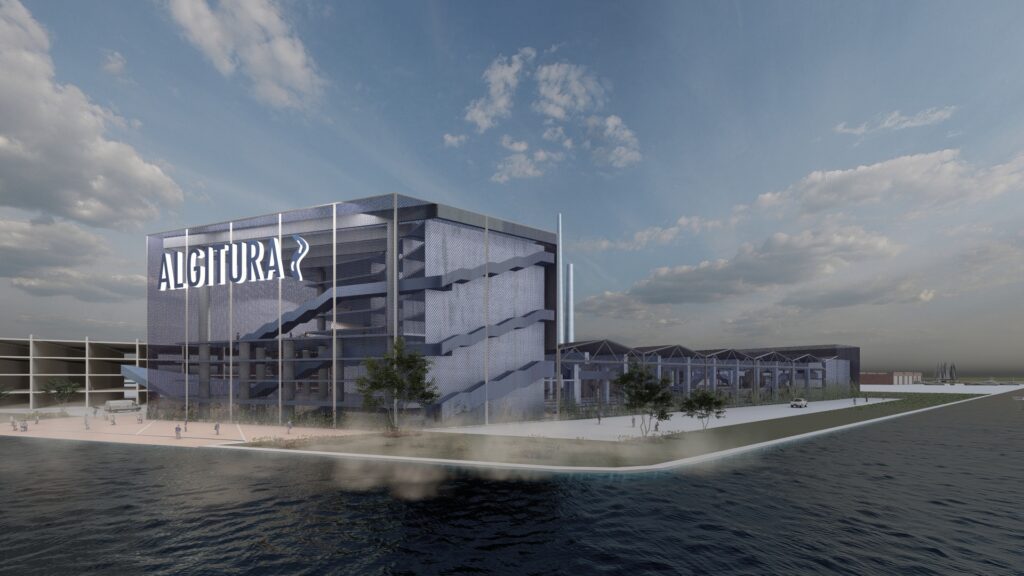Mia Frleta
MA Arts, Festival and Cultural Management, Queen Margaret University and Sustainable Healthy Cities: Building for the Future Summer School student
Email: [email protected]
Tronchetto is an artificial island created in the 1960s originally envisioned as a large parking lot. During the 2024 edition of summer school, “Sustainable, Healthy Cities: Building for the Future” in Venice, organised by the European Cultural Academy, the GCHU and the Prince’s Foundation, we were asked to explore new ideas for repurposing it.
When I began contemplating the reimagining of Tronchetto, I found the location quite perplexing. Although uninhabited and empty in some areas, others are quite important for everyday life in Venice, housing the bus station, municipal police, local transport offices, and maintenance facilities, and serving as a transport hub for goods arriving in the city.
Drawing from my personal experience living in Istria, a region also experiencing pressures of over-tourism, and watching quite a few documentaries about the experiences of Venice residents, I decided to focus on the fact that tourism consumes the city, diminishing any other production. This prevalence reduces opportunities in other industries leading to a fragile overdependence on the tourism sector. It is almost impossible to find jobs that are not involved with tourism.
This impacts the residential quality of the city centre, forcing residents to move to the surrounding areas. The number of permanent residents in Venice has been steadily declining since the end of World War II when the city used to have more than 170,000 inhabitants, nowadays the number has fallen below 50,000.
During the course, I stumbled upon the book, If Venice Dies (2014) by Salvatore Settis, and I was inspired by the chapter entitled ‘The Right to Work’. Building on Lebevre’s ideas on the right to the city, Settis argues that, ‘the work available to local residents can’t be restricted to the tourist monoculture, but has to be worthy of the immense civic capital the city has accumulated over centuries’ (Settis 2014). Much literature on over-tourism addresses the transformation of historical city centres into monofunctional places, or more precisely, monofunctional tourist destinations.
Trying to imagine how the social fabric of Venice would look in the future, and what industries could be revitalised, I thought of fashion and textiles, once cornerstones of the Republic’s economy. Between the 13th and 18th centuries, Venice was the epicentre of the luxury textile trade. I visualised a factory, and an innovation and design centre under the name Algitura, combining the words ‘algae’ and ‘tessitura’, the Italian word for weaving. My proposal for Tronchetto consists of using algae to create sustainable textile fibres, significantly lowering the environmental footprint compared to conventional fibres while simultaneously creating employment opportunities for various sectors in Venice such as biochemistry, biology, textile engineering, design and creative industries, manufacturing and maintenance.

Figure 1: Rendering of Algitura factory designed by Dunja Sloković
Throughout the lectures during the ECA, GCHU, and King’s Foundation summer school, we often discussed how to achieve sustainability in the context of a tourism-led urban economy. Algitura addresses what Settis describes as the most difficult challenge in rethinking the city: fighting against a process of homogenization that is erasing its uniqueness. In my perspective, harmonizing functions is key to reconstructing a city for its inhabitants offering residents a right to work and live in Venice.
List of documentaries:
COVID Has Exposed Venice’s Housing Crisis
Venedig: Zerstören die Touristen die Stadt?
Venedig nach Corona: Zurück zum Massentourismus?
Überfülltes Venedig: Müssen wir anders reisen? Der Untergang Venedigs: Ist die Lagunenstadt noch zu retten?
